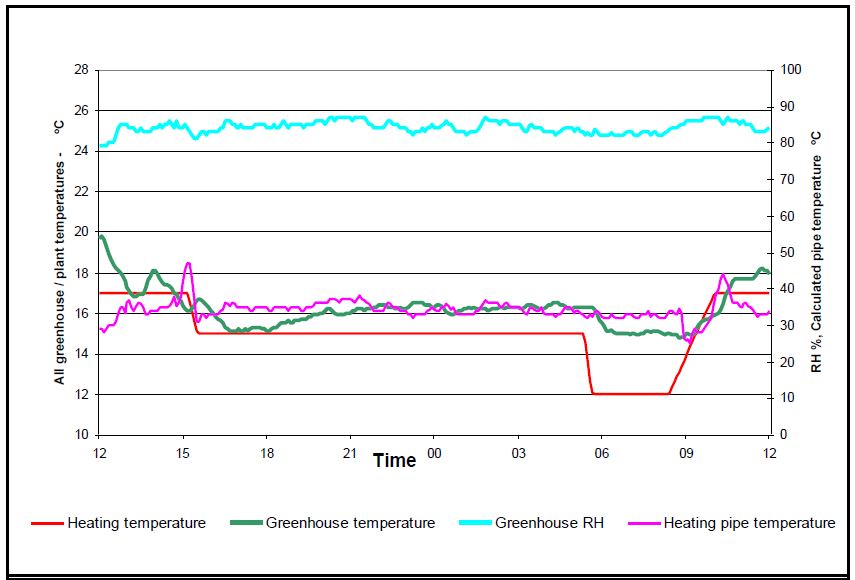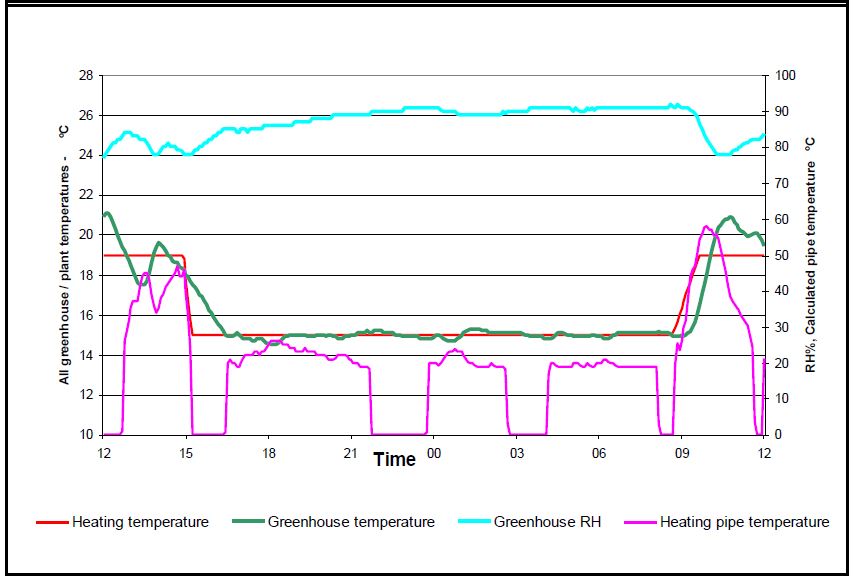Please click here to access the main AHDB website and other sectors.
- Home
- Knowledge library
- What is the cost of humidity control in your glasshouse?
What is the cost of humidity control in your glasshouse?
A controlled study of two humidity control strategies and their subsequent costs was carried out. Read on to see the effect of each strategy in the greenhouse.
Can you afford to control humidity?
When energy is cheap you don’t often worry about the cost of using heat for humidity control. This is because the advantages of a good yielding and disease free crop far outweigh the cost of controlling humidity. However, when the cost of energy increases, you are left asking "Can I afford to control humidity?"
In 2008 high energy prices led one nursery to take the view that active humidity control should be minimised that year. This may have left them exposed to potential disease problems; so was it the right decision?
A comparison of humidity strategies
We compare the performance of two identical greenhouses operating under two different humidity control strategies – with optimised humidity control and with no active humidity control.
The size and layout of the nursery gave us the unique opportunity to compare the performance of two identical greenhouses operating under different humidity control strategies. We therefore did side by side comparisons of the following two approaches.
- Optimised humidity control – with this approach we used the heating and ventilation set-points discussed in How to achieve good humidity control with minimum energy use
- No active humidity control.
The graphs in Figures 1 and 2 show the heating pipe temperatures and the climate in the two greenhouses on the same day.
Figure 1: Greenhouse with humidity control
Figure 2: Greenhouse without humidity control
If we look at the night period we can see that the greenhouse with humidity control had an average RH of 85% compared to 90% in the ‘no control’ greenhouse. However, to achieve this, the pipe temperature in the humidity control house was 10oC hotter.
What does humidity control cost?
We calculate the cost of our optimised humidity control strategy and consider the potential advantages and value of such a strategy.
Over the period from 16:00hrs to 08:00hrs:
- Active humidity control required heating for the entire 14 hours at an average pipe temperature of 35o
- No humidity control used heat for 12½ hours at an average pipe temperature of 21o
We can use this information with data about the greenhouse temperature, heating pipe length and diameter and boiler efficiency to calculate the heat used in each scenario.
On this night the active humidity control used 0.7kWh/m2 more energy, costing an additional 1.75p/m2. Based on the plant density of 9 plants/m2, the cost of humidity control on this night was therefore 0.2p/plant.
Scenario comparison
|
Scenario |
Energy consumption |
Cost based on gas @ 2.5p/kWh (73p/therm) |
|
With humidity control |
0.9kWh/m2 |
2.25p/m2 |
|
No humidity control |
0.2kWh/m2 |
0.5p/m2 |
*Based on 2008 costs.
However, don’t assume that humidity control costs 0.2p/plant every night. This was a worst case night with mild temperatures; so humidity control was particularly difficult. On a colder night more heat would have been needed to maintain the temperature in the ‘no humidity control’ block and the differences between the treatments would have been equalled out.
When assessing the value of humidity control we have to remember the potential advantages including:
- Reduced grade outs/rejects.
- Labour saving due to less picking over.
- Less fungicide applications.
- Better shelf life.
So, before you rush out and change your humidity control settings to save costs, remember the additional work and costs that you might incur if you go too far.
Useful links
Read about achieving good humidity control in your glasshouse within minimum energy use
Visit our GrowSave pages to read more about energy related topics
Topics:
Sectors:
Tags:




